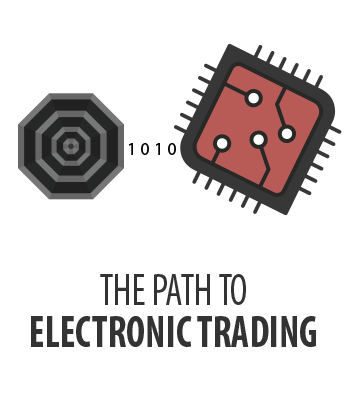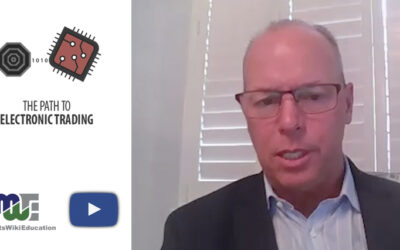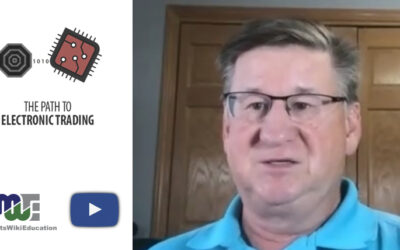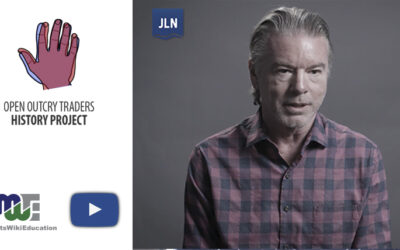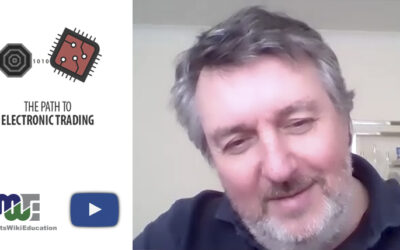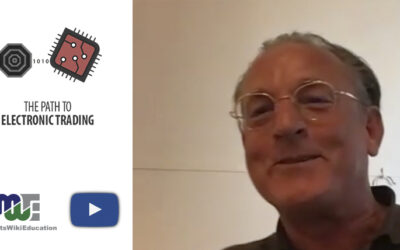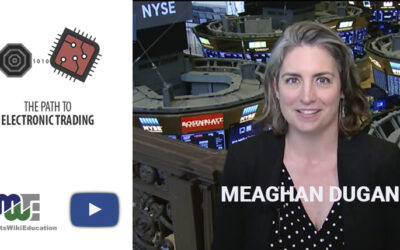FORMER IMC TRADER AND EXECUTIVE OPENS UP ABOUT TRADING ON THE FLOOR, OFF THE FLOOR AND BUILDING THE GOAT TRADING SYSTEM AT IMC
Scott Knudsen found his way to the world of trading by mistake on the online portal at the career center at the Northwestern University where he was studying electrical engineering. He ended up interviewing with a firm called Holland Trading House, which would later become IMC.
The first interview challenge for Knudsen was to do a math test of 100 questions. He was told people don’t finish the test, but Knudsen did. The representative from Holland Trading then talked to the group of applicants about the firm, which began in Holland where the exchange had already gone fully electronic. The same thing was about to happen in the U.S. he said, and would change everything. Knudsen was told there would be a lot of opportunity during this time of disruption.
During the first assessment of the surviving interview subjects, he was part of a group of 20 candidates for two jobs when he found himself in the middle of the pack for a mock trading competition. Knudsen’s decision to step forward and get more aggressive in the second part of the competition landed him the job.
Knudsen started at IMC on September 2, 2003 wearing a tie. He was quickly relieved of it, being told this is not the Chicago Board of Trade, where ties were the rule. For the first six months he was in the office learning about options and markets, including doing more mock trading and some early coding of pricing models.
He began training on the CBOE trading floor, then began to trade at post 6, station 9, where Dell Technologies was trading very narrowly. Dell was trading for most of a year within a dollar of $35, so there was a lot of pin risk.
The trading pit where Knudsen was stationed was somewhat sleepy and his colleagues gave him a lot of grief about it, even leveling the accusation that the pit did “group hugs” at the end of the trading day.
Even though Knudsen was trading on the floor, he was trading on the CBOE’s hybrid model, so he was trading in the pit, but also streaming quotes into the match engine. You had to be in the pit to stream quotes to CBOE Direct, the CBOE’s match engine.
Knudsen said the Citadel traders hired some friends to sit in the pits and stream quotes and then they just watched movies.
Knudsen was on the trading floor for a year and a half. He applied for a remote market-making badge as soon as it was available.
His badge was SMK and the nickname he was given was SMACK. He was told when he protested that it was better than SMUCK. He agreed.
The first day he was able to stream quotes remotely was the last time he saw the trading floor. The biggest difference was that rather than being surrounded by competitors, he was now surrounded by colleagues, all working together.
This seismic shift allowed IMC to hire and grow and become profitable because they could scale up good ideas quickly. But they quickly learned the hard way they could not scale every great idea they came up with and make money.
The biggest issue they confronted at the time was latency. This was when IMC hired their first IT professional. His first task was to literally watch the monitor in the server closet to see if latency was getting too high so the traders could pull their quotes.
IMC had a lot of freedom of strategy, so they focused on technology. They determined that they needed to get closer to the match engine and IMC became one of the first firms to co-locate near the exchange match engines. This helped them become profitable and they began picking off other market makers.
In the early days IMC used software from Actant, like many other traders. However, the trading software did not have as much transparency or as many features IMC wanted.
This led to the creation of an international dream team of developers during 2007-2008 that had a mission of building an IMC automated trading system. The system was called GOAT, for Global Options Automation Team. All of the software now used at IMC is named after an animal.
The system was put on pause during the second part of 2008 because of a surge in trading when they needed all hands on deck. They picked up building it again in 2009, and by 2010 they were ready to deploy it.
They did not want to disrupt an existing market where they were trading and the CME was just starting FX options on Globex. IMC deployed the GOAT in the Euro/$ options and quickly received a call from the CME because they were in every market, but only with one lot. The CME was upset with the lack of liquidity showing, despite the tightness of the markets.
They were persuaded to show 10 lots and make the market wider, but IMC was still in every option. All of a sudden, IMC was doing most of the volume in the electronic Euro/$ pair.
IMC next moved to the Treasury options, but they were told the GOAT would never work better than the experienced traders there. Knudsen put a trainee on GOAT on the Treasuries and by Day 2 the trainee using the GOAT cleaned up.
From then on, Knudsen was not taking any grief about the GOAT and IMC deployed the GOAT around the world.
The role of the trader had changed: One trader could do the work of 10 people and do it much better, he said.
Get more news from JLN at http://www.johnlothiannews.com. Follow us on Twitter at http://www.twitter.com/JohnLothian, http://www.twitter.com/MarketsWiki or http://www.twitter.com/JLNOptions. Follow JLN on LinkedIn at https://www.linkedin.com/company/236044/admin. Follow JLN on Facebook at https://www.facebook.com/johnlothiannews.
